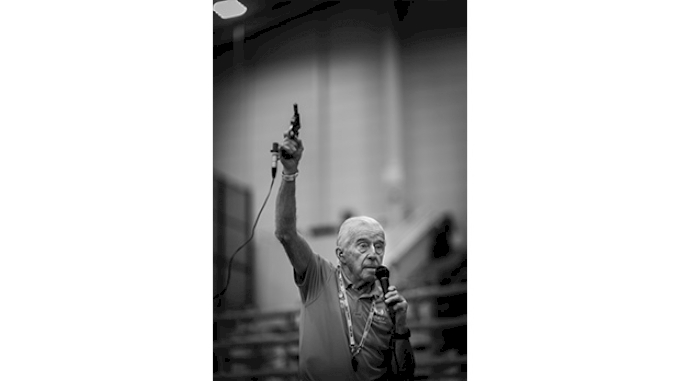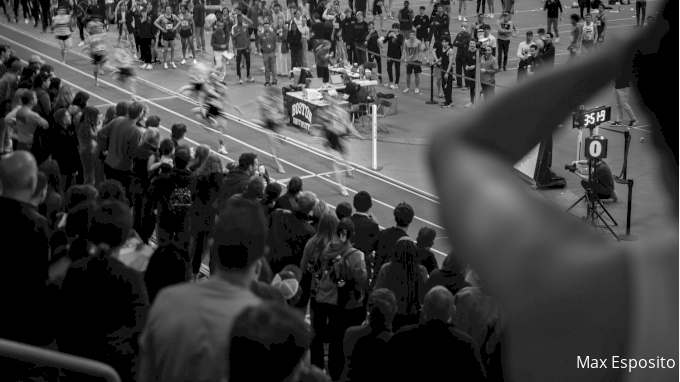BU Has Become An Essential Racing Destination. Here's Why.
BU Has Become An Essential Racing Destination. Here's Why.
Eleven years ago may have been the inflection point for elevated grandeur at Boston University. The momentum hasn't stopped since.

Two days into December, just 14 days after the end of the NCAA cross country season, 207 men and 166 women followed the exodus of one campaign with the start of another inside the Track and Tennis Center at Boston University.
What lied ahead were seven sections of the women's 5,000 meters and 10 sections of the men's heats, which amounted to a total of 425 total laps and more or less six hours of nonstop running during the Sharon Colyear-Danville Season Opener.
It was all live over the internet on FloTrack. The place was packed, with a scattering of coaches, athletes and fans on the infield and hundreds more on the outside of the track, the TTC's capacity of 4,800 probably close to 3,000 or more. The combined views of the races on YouTube afterward toppled over 200,000.
"BU are kings of the hill," said Phil Grove, who is the head play-by-play commentator for FloTrack over six meets in Boston.
Elite distance athletes know the reasons. So do the diehard fans. But more or less anyone outside the world of running would be shocked to know just why a small facility in the heart of Boston is such a coveted destination for the best long-distance track programs in the U.S. and the fastest athletes domestically and internationally. World and Olympic medalists, in no small order, have gotten their seasons started here.
"Sometimes it's just called the 'Fastest Track in the World,'" said the 31-year-old Jordan Carpenter, who is Boston University's associate head coach and the program's meet director. He runs operations for six Boston University-led meets over two and a half months every year and is also the team's head distance coach.
"You come here and take off," added Gabe Sanders, 40, who is the Director of Track and Field and Cross Country for BU and leads the program's sprints and hurdles contingent.
What's not often discussed, however, are the central dynamics of how these meets are designed, and what the successes of their growth has meant to the Boston University program.
Sanders and Carpenter are key to those two questions, supplying the anecdotes and factors which have led BU meets to becoming the essential destination for athletes of all disciplines over the indoor track and field season.
BU hosts a total of six races over the year, though their last five come in quick succession and over five straight weeks of racing inside the building. In total, the Track and Tennis Center hosted just over 10,000 athletes in 2024. The Sharon Colyear Danville Season Opener, meanwhile, takes on a run-off effect, grabbing fitness from the previous season -- in a lot of cases, those races have qualified athletes for the ensuing NCAA Championships just over three months later.
That wouldn't have been possible without a long-term plan from leadership and their work connecting the dots within the school's administration, campus leaders and BU security.
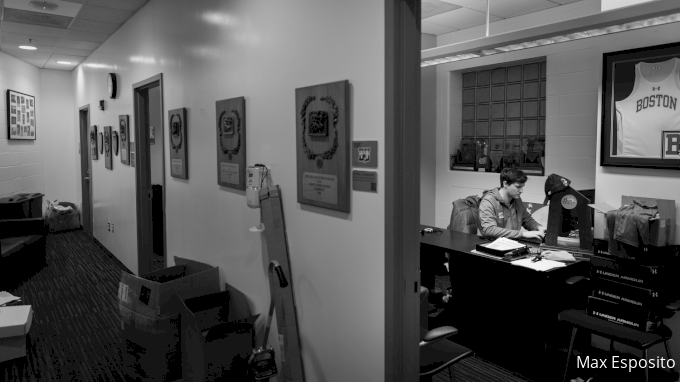

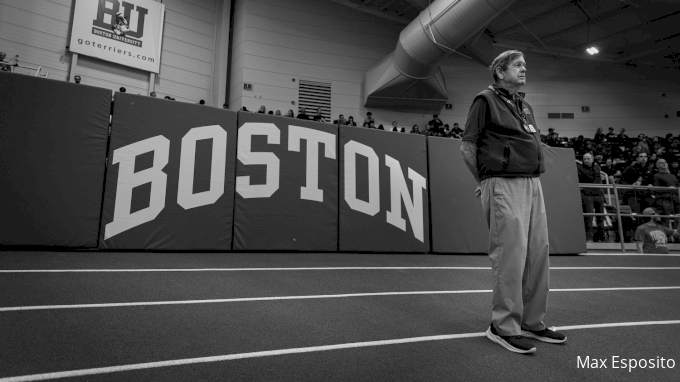
A rough estimate of total entries -- depending on which meets athletes entered, individual entry was $50 or $100 -- would give you an idea of the return for BU over that stretch (overhead like timing, contract labor and additional expenses, however, eat into that budget), though that doesn't include ticket sales either, which are strong. Neither Sanders nor Carpenter would comment on revenues generated.
Still, Carpenter, who is an MBA, clearly understands the definition of supply and demand.
"If you have the time standard and $50 or $100, depending on which meet you're looking at, you've got a spot in our meets," he said. "It's as simple as that. It's not who you know, what team you're on. Are you fast enough? And do you want to show up?"
Sanders also added: "We are demonstrating that we are a healthy program."
That success has carried over to full men's and women's rosters at BU, a budget-friendly green light to upgrade on equipment when need be and the cashing in of opportunities for aspiring athletes who might be seeking a qualification to NCAAs.
The bigger impact comes from the venue, with BU creating opportunities for top professionals, burgeoning NCAA stars and even international athletes. Over the last decade, the TTC has become a track mecca much like Cameron Indoor at Duke, The Big House at Michigan and Franklin Field at Penn.
"We do a really good job in putting people in a position for success and also trying to facilitate as many people as we can functionally get into the building as possible," Sanders said.
Sanders said the inflection point came in 2013. Just months removed from an Olympic silver medal in the 10K, Galen Rupp signed up for the mile at the John Thomas Terrier Classic under the advice of Alberto Salazar. "He said something to the effect of, 'In my research, BU is the place to be,'" Sanders, who was an assistant at BU at the time, remembers of Salazar saying.
"Within 40 minutes, we sold 500 tickets going into that race," Sanders said.
Rupp went on to run 3:50.92 -- it was the fastest indoor time in the world that year.
A series of whirlwind moments have followed at the track, including countless NCAA records, American records and Olympic standards.
Among the accolades at the TTC? A world record 52 men went under four minutes in the mile across a single meet. There have been American records achieved by Rupp, Grant Fisher, Yared Nuguse, Woody Kincaid, Karissa Schweizer and Elise Cranny.
"I think we had three different 5K fields where the Olympic standard were set on the men's side (this year alone)," said Carpenter, commenting on the 13:05 qualifying standard. "We had a women's field hit that standard as well. We've seen the rest of the world see. These are cool opportunities at this facility. It's set up to run fast. And it's a track that runs fast."
There are certain physics that contribute to a fast track for distance runners. In fact, one of Google's most popular searches when citing the Boston University track is "Why is Boston University track so fast?" Last year, a BU Today story dove into that topic, citing the 18-degree angle of the banks, the wooden foundation and the "centripetal forces" that runners use to slingshot around the turns.
Sanders adds another caveat: "We sprinkle old magic fairy dust."
Of course, the real multiplier here is modern shoe technology, super-focused training and ambition. It all contributes to forgiving banks, smoother transitions and turns that allow for distance runners to hold on to their speed better.

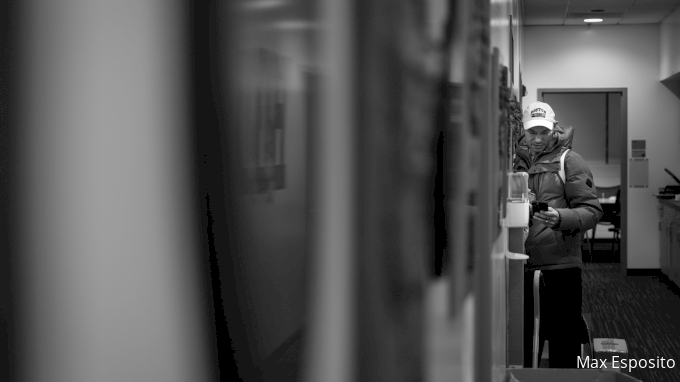

Blanks broke the NCAA indoor record at the TTC in that December race. It was his first contest after winning a national cross country title in November. He clocked an Olympic standard time of 13:03.78.
Northern Arizona's Nico Young, however, came back nearly two months later and lowered it to 12:57.14. In total, five runners went under 13:15 on the track and 25 were under 13:30.
Florida' Parker Valby, meanwhile, clocked an NCAA record of 14:56.11 -- though she would later lower it at NCAAs in 14:52. Fifteen of the top 30 NCAA performances in the women's 3K came on the Boston track over the indoor season. The top 26 men's performances in the 5K were all on the TTC.
This all coming, mind you, after a resurfacing in 2023 that stoked some questions -- "Would it be as fast?" The answer: yes -- and despite the fact that countless other indoor facilities have been built over the last 20 years across the U.S.
BU was erected in 2002 and held its first race in 2003. But to this day, more than 20 years later, BU remains the place to chase after qualifiers and records.
Ironically enough, Sanders was in the building for the very first John Thomas Terrier Classic in 2004. He was a preferred walk-on at Michigan who had matriculated to student-management after injuries had forced him out of a jersey. It was then that he saw the figurative magic of BU, saying "guys ran lights out in January."
Sanders' journey to BU took a couple turns from there. He was hired in his first official capacity at Williams College, a prestigious academic institution, and then won a national Division III title in his second season. A short stint at Colgate followed, and then a seven-year stretch at BU as an assistant coach. He was plucked by Stanford for a stretch and then came back to Boston in 2019 as a director.
Sanders said his experience at Stanford -- he helped coordinate the Stanford Invitational -- helped him craft a better vision for how meets should be run at Boston. Planning, for instance, starts the moment after the last race ends in February.
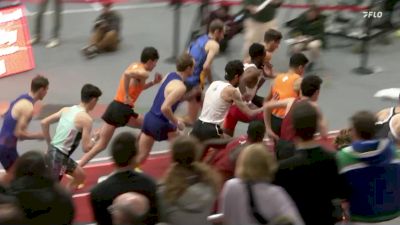
"We'll have a meeting about it," Sanders said. "We talk about how it went, the good things, what we implemented, what needs to be better, what we caught up in. We're literally a full year in advance."
Carpenter is a crucial component here, too. He came to BU three years ago after applying sight unseen on the NCAA job portal. He graduated from the University of Wisconsin-Oshkosh, where he held a perfect GPA and was a multiple-time Division III All-American -- his highlight was a runner-up finish in the 3K steeplechase. Like Sanders, he won a Division III title in his first coaching job out of college at Pomona-Pitzer.
BU, Carpenter said, "was a school I looked at," so he figured, why not?
Carpenter now owns the administration side of the program's meets, answering over 100 emails a day heading into busy season. He seeds the meets and works hand-in-hand with professional groups like the Bowerman Track, Brooks Beast and On Athletics Club to facilitate athletes opportunities to race on the track.
"(My job is) allowing Jordan to have the full operational piece and letting him decide how we can logistically make these meets as functional and high-performing as possible," Sanders said.
In February, for instance, Grant Fisher was set up in the 10K and chased after the American indoor record -- which he came up just short in. Professionals like Craig Engels, Courtney Frerichs, Eric Holt and Adriaan Wildschutt also ran at the TTC in 2024.
There are also the logistics of rabbits. Carpenter and Sanders hire rabbits -- otherwise known as pace-setters -- to lead their races toward their goal times, anywhere in the range of $250 to $750 for a specific series of distances.
Of BU's six meets, the David Hemery Valentine Invitational, which is spread over two days from Feb. 9-10, is the largest with over 4,500 athletes. The John Thomas Terrier Classic nets around 3,000 athletes, while the Scarlet & White Invitational and the Season Opener have grown in recent years. The Terrier DMR Challenge has been the only addition to the calendar over the last five years.
Now, while the TTC serves the greater track and field community, the Terriers ultimately take care of things at home, too.
The elevated success of the program's meets has opened doors for both Sanders and Carpenter to recruit nationally and internationally.
"I can get on a first phone call with any kid in the country and they know where BU is," Carpenter said. "They might have have seen a Tik Tok of a race, and even if they don't recognize us at first, I'll say, 'Did you see Nico Young break a collegiate record here?' It's huge in recruiting.
"We'll talk about, 'You'll be in races where there will be Olympians. No matter how good you get, we will have a race for you."

